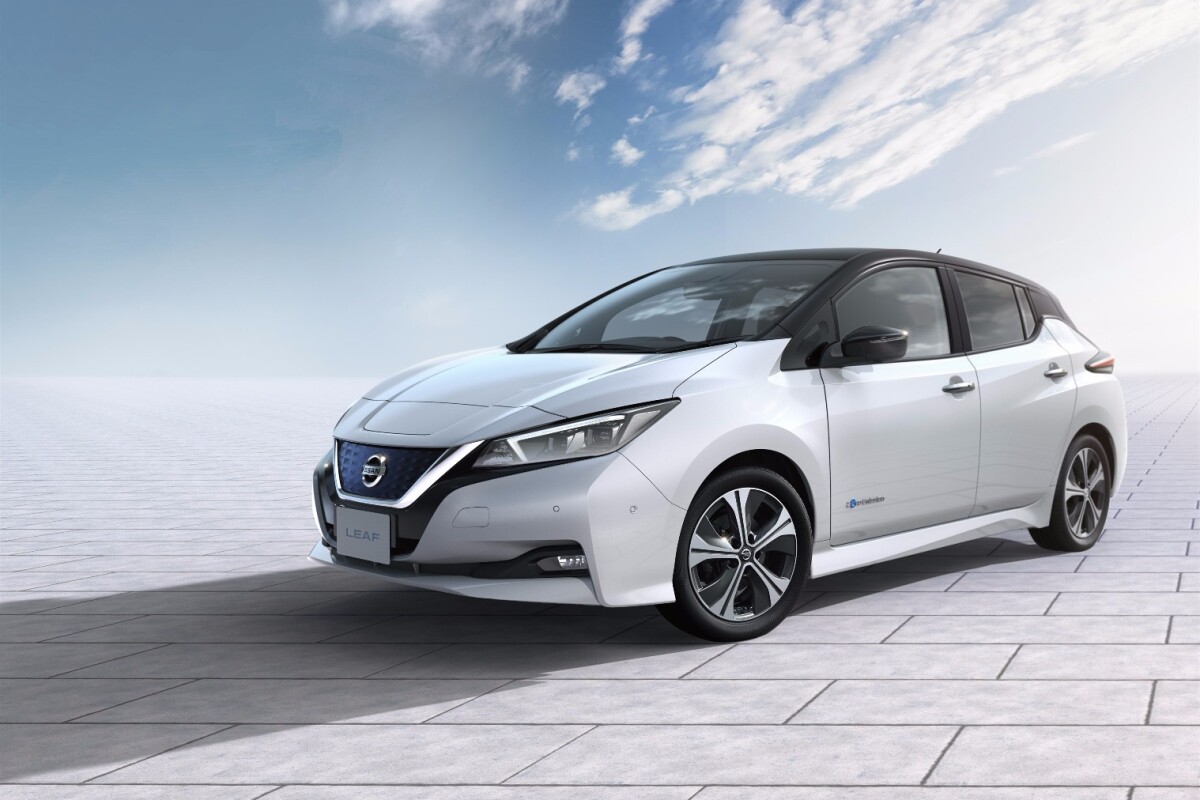Nissan has finally stopped teasing and unveiled the new Leaf at an event in Tokyo. With a higher-capacity battery, more power and a higher-quality interior, it represents a huge step up from the current model.
Initial specs for the Leaf demonstrate how quickly the electric car game is advancing. The current car has a 30-kWh lithium-ion battery, good for just over 100 mi (160 km) of range on a full charge. The extra-dense lithium-ion battery in the new Leaf boosts capacity to 40 kWh, but fits into the same space as the old unit, for a claimed range of 378 km (235 mi) on the New European Drive Cycle. Expect that figure to be worse on the more stringent EPA test cycle, though.
Charging is a slow process, with a claimed 16-hour charge time on a 3-kW wall socket and a claimed eight-hour wait using a 6-kW charger. Nissan also offers the ability to hit 80 percent charge in just 40 minutes using the right connector. BMW offers similar capability in the i3. A bigger battery will be offered in 2018, but Nissan is remaining tight lipped on how much extra range it will deliver.
For those keen to go the other way, the car comes with vehicle-to-grid (V2G) capability built in as well. That means owners will be able to hook their cars into the power grid and sell energy, theoretically allowing them to charge up with cheap off-peak power and make money selling it during periods of heavy demand.

With 110 kW (148 hp) of power and 320 Nm (236 lb-ft) of torque on tap, the car will hit 144 km/h (91 mph) flat out. Acceleration figures weren't released, but that isn't likely to faze potential buyers. Unlike the Tesla Model S, the Leaf has never traded on neck-snapping acceleration. With that said, a boosted Leaf NISMO with motors on all four wheels would certainly be cool.
While we're talking performance, it's worth mentioning the chassis changes Nissan has made in the new Leaf. The company says heavy objects – battery included – have been placed in the middle of the chassis to tighten the handling up, and the low-slung battery should give the car a decent center of gravity as well.
The software driving the electric power steering has been tweaked, and the steering torsion bar is 10 percent stiffer than before, for better feedback and a more linear response to steering inputs on the highway. Rubber bushings replace urethane units in the rear suspension for a more refined ride on bumpy tarmac, and more precise control over the electric motor in corners has allowed Nissan engineers to cut down on unpleasant vibrations in the cabin.

Nissan spent a lot of time talking about tech in the lead up to the new Leaf launch, but we'd be hard pressed to find something on the car that isn't already available elsewhere. The semi-autonomous ProPILOT cruise control system can maintain a gap from the car ahead on the highway, stay centered in its lane between 30 and 100 km/h (19 and 62 mph), and brake to a full stop with the traffic, while ProPILOT Park will automatically steer into a spot when prompted.
Although most electric cars make use of regenerative braking, the new Leaf takes this brake-free deceleration and packages it in something called the e-Pedal system. When the driver lifts off the accelerator, the car slows down as energy is drawn back into the battery, essentially braking the car without using the brakes. Nissan says the system allows drivers to leave the brake pedal alone for 90 percent of their driving. The regenerative braking systems in both the BMW i3 and Tesla Model X/S mean that, in our experience, they could also be driven with minimal input from the brake pedal.
One glance at the interior reveals a more luxurious, high-end look compared to the current car. The dashboard is dominated by a seven-inch display for infotainment, and the driver is faced with another seven-inch screen in place of conventional dials. Apple CarPlay and Android Auto will be included on cars with the higher-spec infotainment system. Down back, the boot holds a useful 435 liters (15.4 cu-ft) of gear – a handy jump from the 370 liters (13 cu-ft) offered by the old car.

As for the exterior? Well, it's certainly prettier than the old Leaf. The front end is inspired by the IDS Concept and, in concert with a sealed underbody, neat rear diffuser and cool-looking aero wheels, contributes to a drag-coefficient of 0.28. Along with better range, that slippery figure should make for a quieter cabin on the highway.
Pricing for the Leaf hasn't been announced, but reports suggest it will cost around US$30k at launch. That makes it cheaper than the Tesla Model 3 and Chevrolet Bolt in base 40 kWh form, with no word on the price (or range) of the more expensive model with a bigger battery. The car will be on display at the Tokyo Motor Show in October.
Source: Nissan





































